Interviews were conducted by Fiona Luis and have been edited for length and clarity.
The kids are all right
The next generation looks ahead
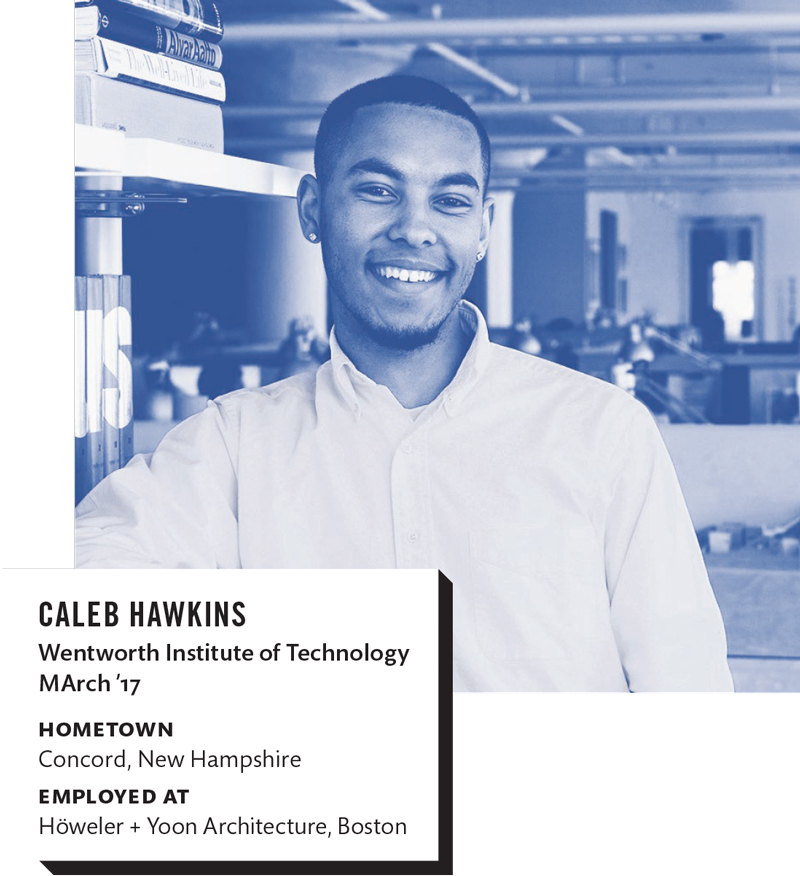
The biggest challenge facing society in 20 years?
Its relationship to advanced technology. Today, technologies like the smartphone have had a significant impact on the way people interact with and perceive the world they live in. Architecture has done little to intimately engage with this change in how people live.
How can architects help?
By engaging with not just the body but all of its augmentations, from a device in the hand, on the body, or in the brain. By embracing these technologies from the conceptualization of a space and its use, architecture can synthesize both our physical and digital realities to better suit the lives of the people who interact with that space.
How can architectural education be improved?
By framing a pedagogy aimed at embracing and intervening in the dialectic between academia and professional practice. There is great value in under-standing their relationship and how it drives architecture forward as a profession.
What do you see yourself doing in 2037?
Writing, teaching, and giving lectures around the country about art, technology, and design; and working with a highly skilled team at a design firm, implementing our processes and ideas.
In a yearbook, you’d be voted most likely to:
Be the biggest techie.
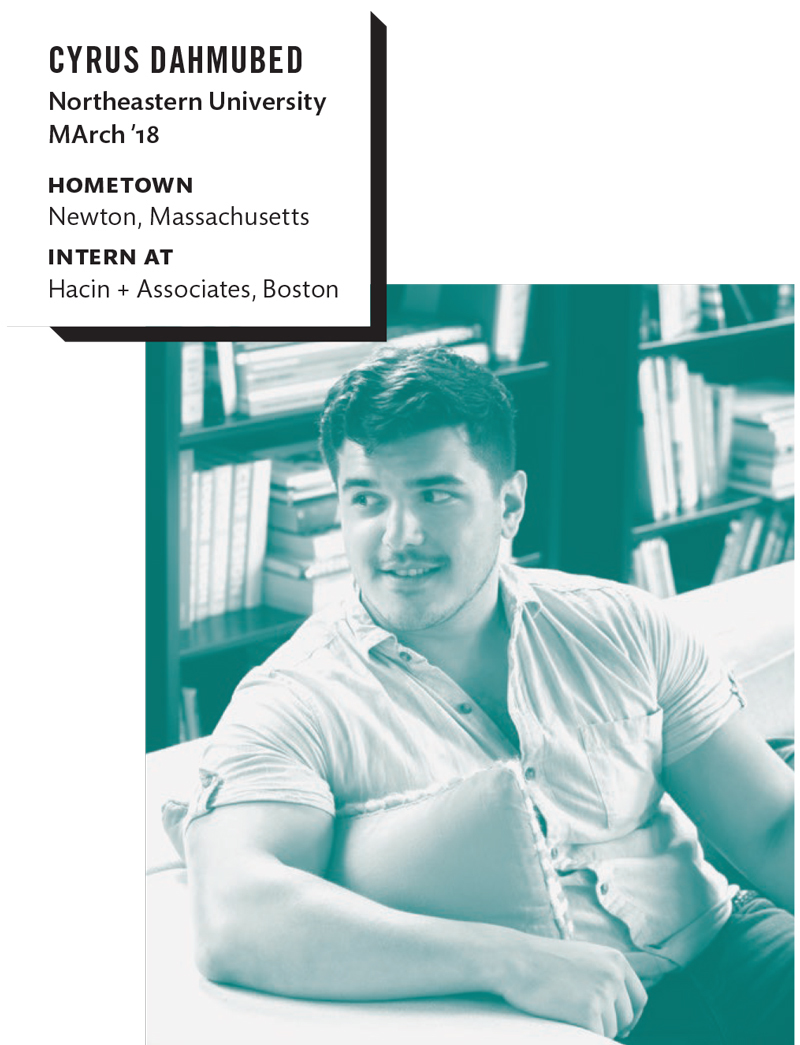
The biggest challenge facing society in 20 years?
Widening divisions in American society will affect our ability to respond proactively to issues like climate change and a destabilizing political climate. How will we protect freedom of speech in 2037 if we’re incapable of agreeing on the definitions of freedom and speech in 2017?
How can architects help?
Good designers are like modern-day philosophers; they have the power to heal these fissures. Where we perceive divisions, we may actually be able to repair them — literally, like restoring a park or waterfront to bring people together, or a less-physical opportunity like influencing the passage of laws dictating environmental standards for design and construction.
How can architectural education be improved?
By focusing less on information and skills and more on adopting the practices of liberal arts education to teach students how to think critically about the world and the impact of their work on it. The artistry of design and the thinking that is tied to it is what makes architectural education valuable. Components of design education should be integrated with one another, with other design disciplines, and with anthropology, political science, and philosophy.
What do you see yourself doing in 2037?
Running for or holding public office after a few years of practice but remaining deeply convinced that societal struggles should be approached with a designer’s mind and eye.
In a yearbook, you’d be voted most likely to:
Break all the rules, in all the right ways.
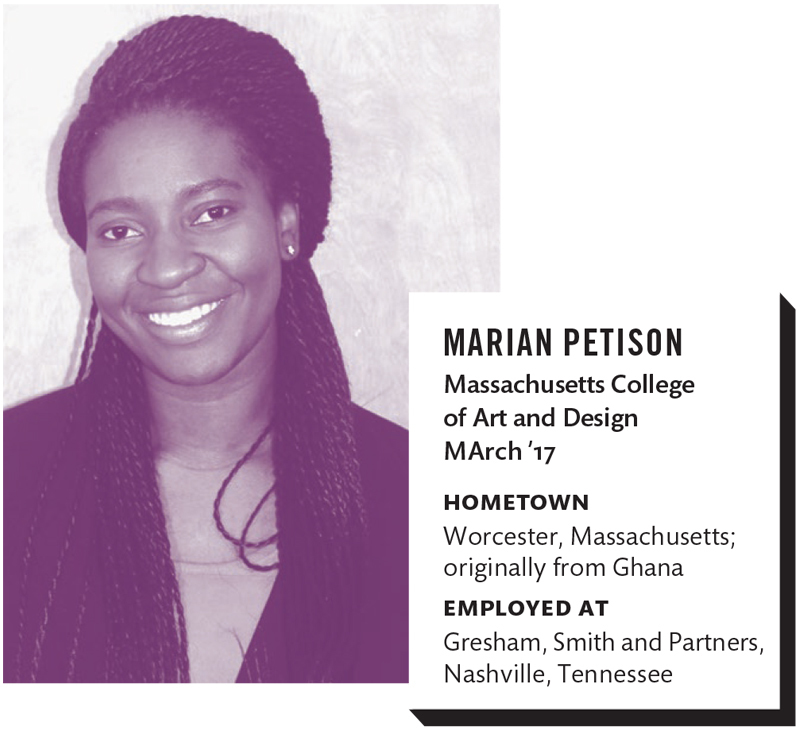
The biggest challenge facing society in 20 years?
A progressively reclusive society, with people caring more about themselves, wallets, and “stuff” than the next human being; a breakdown in social networks; and a lack of social support.
How can architects help?
By looking back at how old communities and towns were established and designed to foster social interaction. We need to focus on using design as a tool for community building.
How can architectural education be improved?
More courses in architectural professionalism; learning how to manage and work with different types of clients, consultants, and other professionals in a design-build team should be a required part of the curriculum. Internships and co-ops should be mandated. The Community/Build Studio at MassArt should be emulated.
What do you see yourself doing in 2037?
Owning an established firm with a focus on healthcare design, and partnering with architects in Ghana to establish a design practice; teaching future architects and designers.
In a yearbook, you’d be voted most likely to:
Be successful.
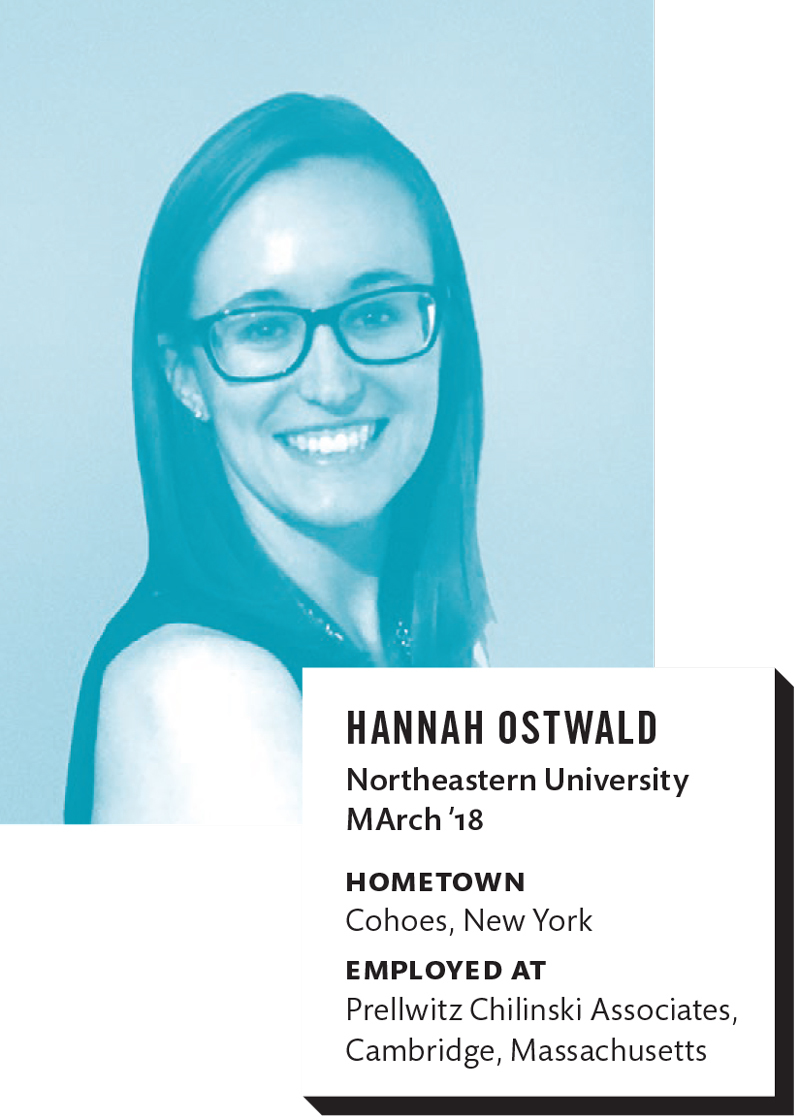
The biggest challenge facing society in 20 years?
The amount of waste created by our society.
How can architects help?
By choosing materials that can be reused or recycled when buildings are demolished at the end of their lives. When designing spaces for the future, the entire life span of the building needs to be analyzed.
How can architectural education be improved?
By bridging the gap between designing in school and the construction of those designs. In school we were encouraged to solve complex problems, but we lack knowledge in how a built piece of work actually comes together. We need more exposure to the range of materials available today and how to use them to their greatest potential.
What do you see yourself doing in 2037?
Working in the Northeast as principal of an architecture firm, while teaching at a university part time. I will have designed my dream home on the water with a porch to rival the interior space, and I’ll be whipping up half moon cookies on the weekends.
In a yearbook, you’d be voted most likely to:
Volunteer time I don’t have.
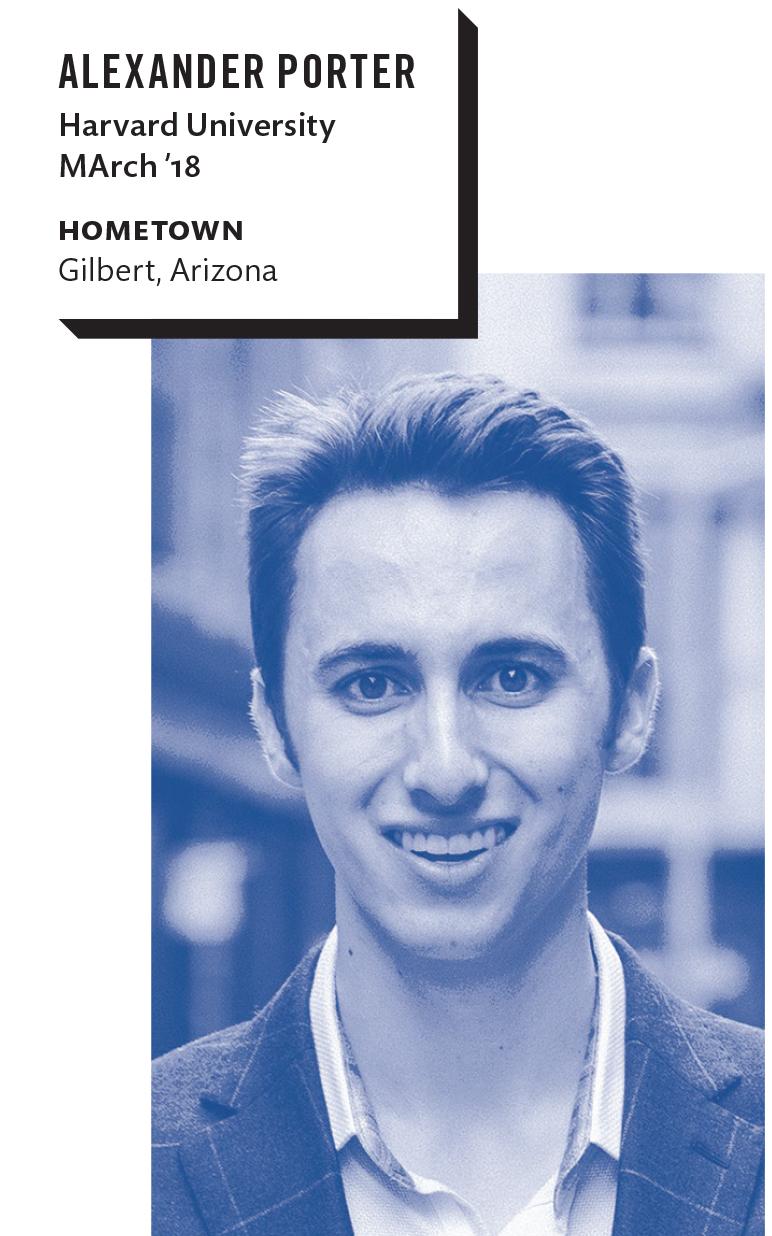
The biggest challenge facing society in 20 years?
Pressing challenges will include resources, climate, inequality, disease. Is it possible to distinguish between the urgency of political crises and the representation of these crises?
How can architects help?
Just as Le Corbusier’s architecture used the aesthetic innovations of Cubism to place the individual in a newly industrialized world, so, too, must architects figure out how to record our culture in dots per inch. We must critically question the way digital imagery has dislocated our understanding of space and, more important, our position in that space.
How can architecture education be improved?
Suppose we were taught that architecture was entertaining. We would have to frame architectural pedagogy with a much keener focus on the narratives that underpin design. Rather than teach architects to follow functions, we should teach them to form fables.
What do you see yourself doing in 20 years?
Writing a book.
In a yearbook, you’d be voted most likely to:
Teach.
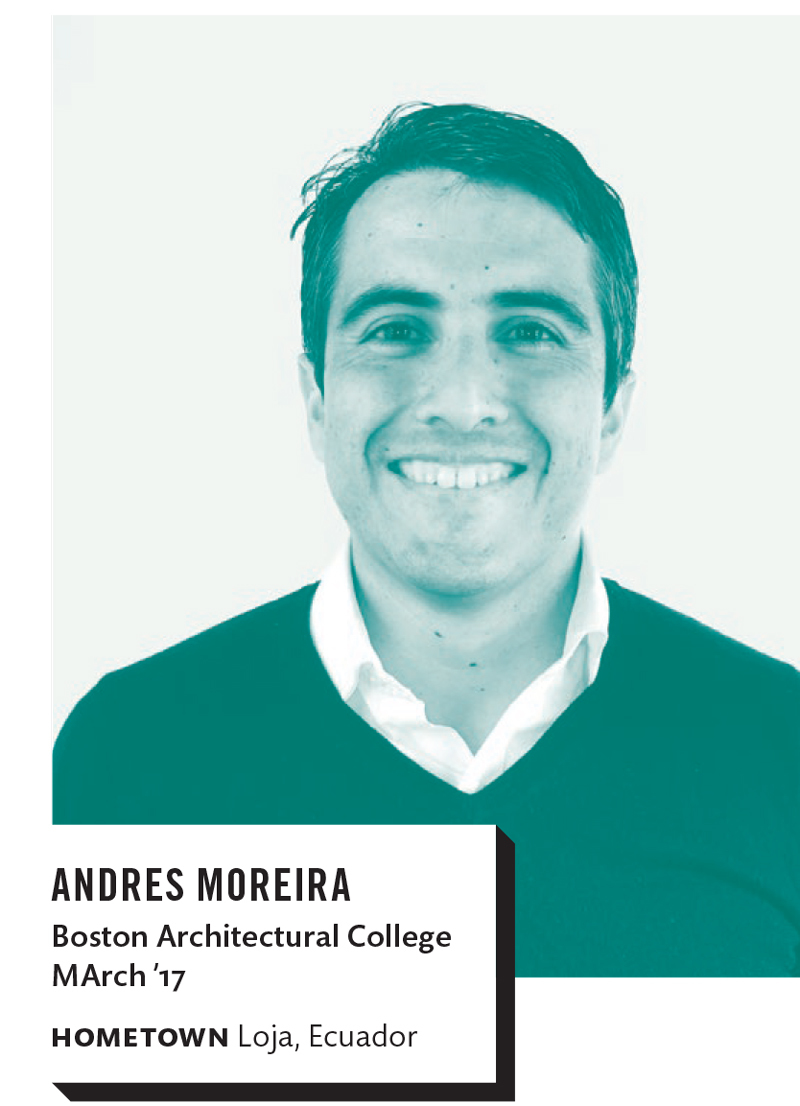
The biggest challenge facing society in 20 years?
Preserving local cultural and heritage values, the ability to adapt to constant climate changes, and ensuring that infrastructure evolves at the same pace as technology.
How can architects help?
I don’t think that problems should be solved by only one discipline.
How can architectural education be improved?
By giving more importance to traveling and exchange programs. We are taught to observe and draw, but it is also important to experience a space.
What do you see yourself doing in 2037?
Teaching and maintaining a balanced life between academic and professional work, designing and researching in my own firm.
In a yearbook, you’d be voted most likely to:
Play the role of Alexander Hamilton in Hamilton or teach in a university.
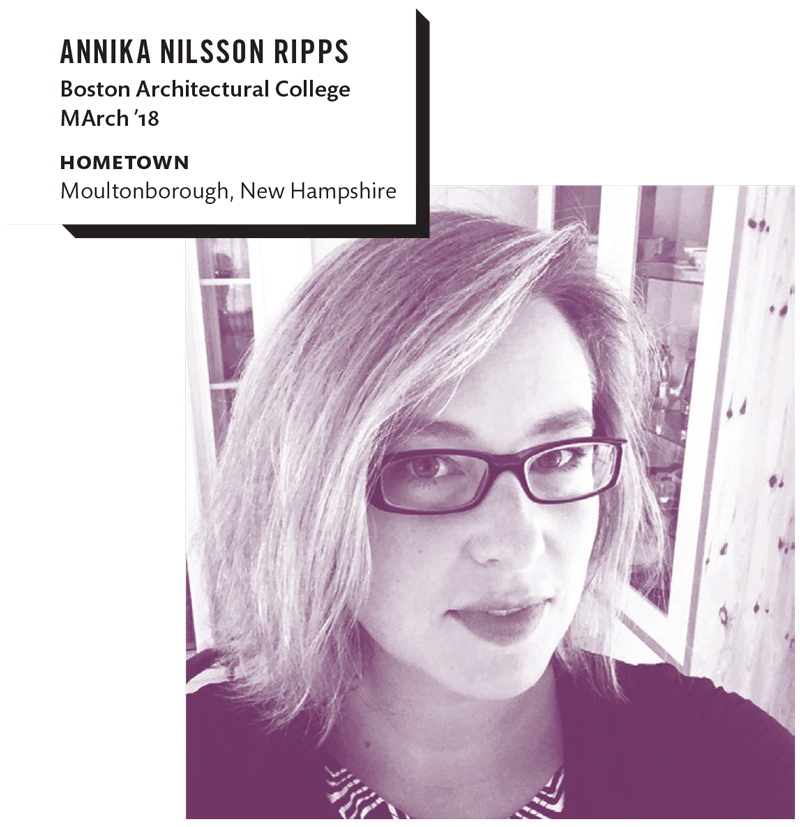
The biggest challenge facing society in 20 years?
To find a way for the many communities that exist within society to adapt to new information and conditions that do not create boundaries and discount people who challenge the status quo.
How can architects help?
Environmental and climactic systems are changing at record speed. Architecture must respond to this new time scale. The built environment must respond to changing needs and conditions through new technological innovations and more agile designs, and by employing communities to participate in placemaking.
How can architectural education be improved?
By including students and emerging professionals in shaping new building and design technologies. Engineering schools often partner with industry and/or government institutions to develop new technologies. Design schools should follow this model.
What do you see yourself doing in 2037?
Focusing on designing spaces that serve the larger community while paying particular attention to the inclusion of our marginalized and vulnerable populations.
If this were a yearbook, you’d be voted most likely to:
Go into politics or work for the homeless.
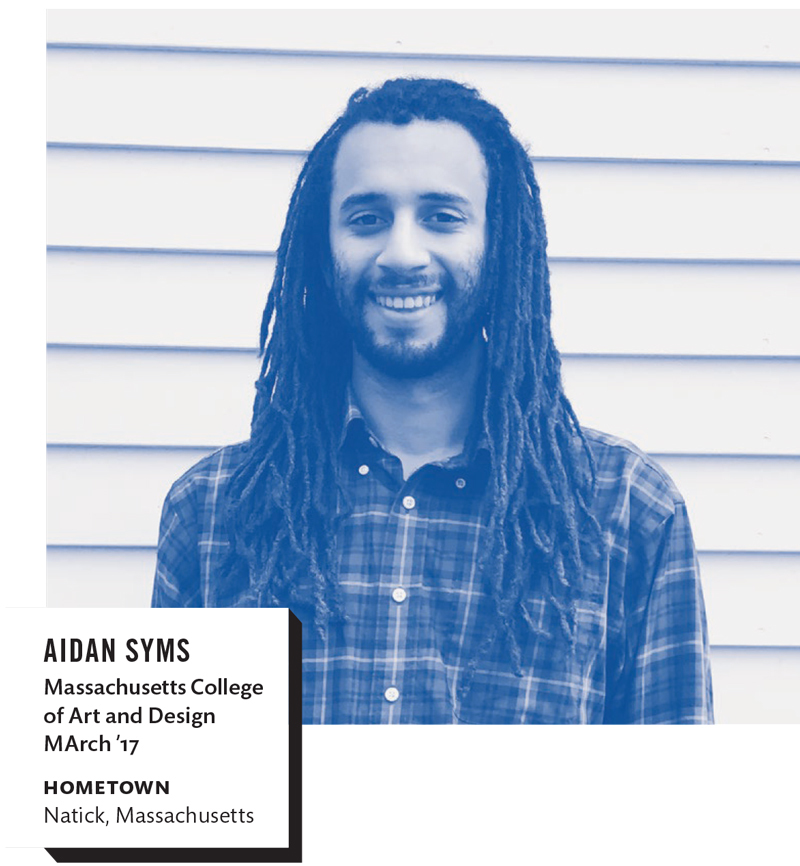
The biggest challenge facing society in 20 years?
The negative impacts of climate change. Population increase in the face of destabilization due to climate change will compound all social issues.
How can architects help?
They have the responsibility to create a world that sustainably influences humanity to act in a way that cultivates strong social, economic, and ecological systems.
How can architectural education be improved?
By cultivating a foundation of skills through gradual immersion in the professional design world. Much like that of trades, we should have students practice alongside professionals on real projects from day one. Technological literacy and digital design education is a crucial part of this relationship. Encouraging diverse, comprehensive dialogues and experiences is critical to the development of a progressive and ecologically conscious architectural pedagogy.
What do you see yourself doing in 2037?
Being part of an interdisciplinary design studio that works on a diverse group of projects. I’d like to live and work in an interesting place as well.
In a yearbook, you’d be voted most likely to:
Bring balance to the force.
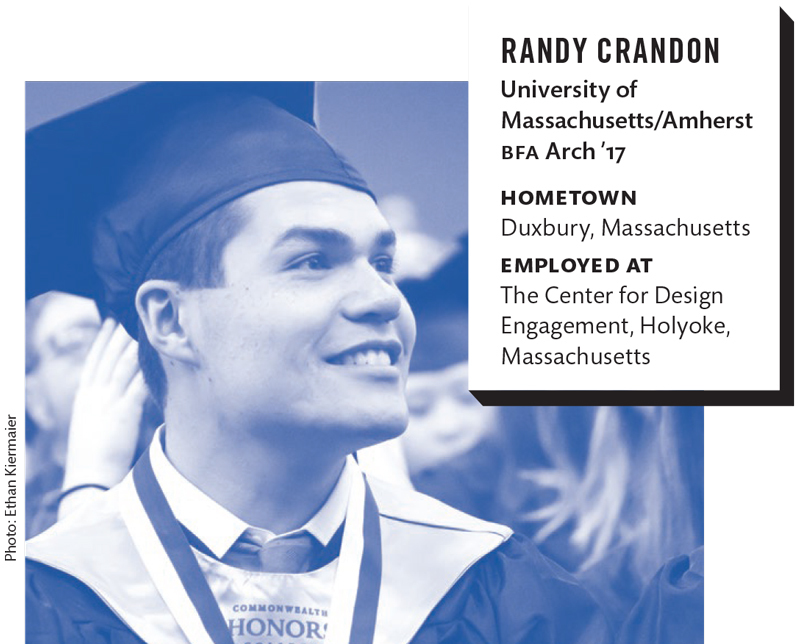
The biggest challenge facing society in 20 years?
The acceleration of climate change. I’m interested in where and how this will intersect with the rise of virtual environments. New technologies of virtual immersion have already seduced users, designers, and their markets, inhibiting critical thinking while distancing us from the tactile, physical processes of making and interacting. Collisions (and collaborations) between the real and the virtual will become all the more significant, putting designers’ interactions with the client and artifact into question.
How can architects help?
We should remain critical about the social and environmental impacts of our work and about the role new technologies play in our thinking in the face of globalized markets and the demand for quick solutions. Practitioners should continue seeking the hidden narratives of places, peoples, and things — weaving them into their creative process, using them as speculative catalysts, and reinterpreting the ways in which they can be shared with the public realm.
How can architectural education be improved?
By encouraging students to take their time and think critically. For students who are affected by socioeconomic pressures and shifting environments, this is particularly difficult. It is easy to fall into a strictly goal-oriented approach to design — one that excludes exploration, speculation, and engagement. Educators should remind their students that cultivating different modes of expression — writing, philosophy, music — is necessary in becoming fluent designers. Simply arming students with tools for computation and representation is not enough. Educators should equip them with a critical lens in the use of new tools — particularly important in an age of evolving technologies.
What do you see yourself doing in 2037?
I’ve always connected with Tod Williams and Billie Tsien’s adage that architecture is an act of optimism. It’s near impossible to project what or where I will be in two decades, but I will be vocal, speculative, and optimistic.
In a yearbook, you’d be voted most likely to:
Use the most tracing paper.
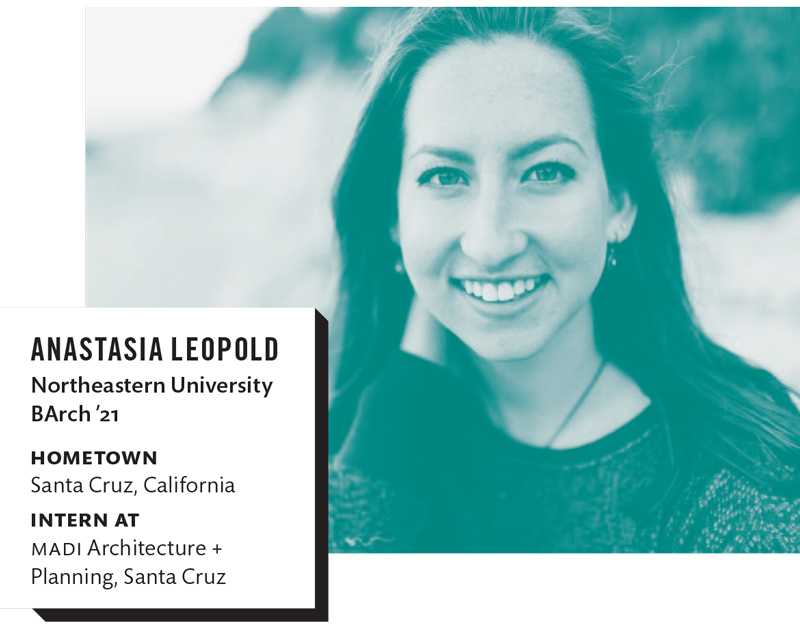
The biggest challenge facing society in 20 years?
Climate change. Growing up on the coast, I was taught about climate change by looking at maps of Santa Cruz slowly going underwater. In California, we are already facing what extreme changes in weather can do, from severe droughts to massive amounts of rainfall.
How can architects help?
It is time to rethink our current ways of designing houses, cities, and commercial buildings. By designing structures that account for future use and sustainability, we will use fewer resources to rebuild. We are facing unprecedented environmental conditions, population peaks, and resource crises. Expanding the bubble of designers to include scientists and politicians can influence public opinion and policy surrounding building codes, product take-back laws, and solutions we haven’t even thought of yet.
How can architectural education be improved?
By emphasizing an interdisciplinary approach and student wellness. I chose Northeastern because it allowed to me to have a rigorous architectural education while dabbling in philosophy, music, sociology, and environmental science. But I don’t think students should be crying in crit rooms, skipping meals to work, and eating Nutter Butters at 3 AM. Universities should provide counseling services and mentors who can guide students in a healthy direction.
What do you see yourself doing in 2037?
Working on public-use buildings like schools and community centers; tackling affordable housing. I wouldn’t be surprised if I found myself back in California.
In a yearbook, you’d be voted most likely to:
Wear more than one (or two) pairs of pants in the Boston winter.
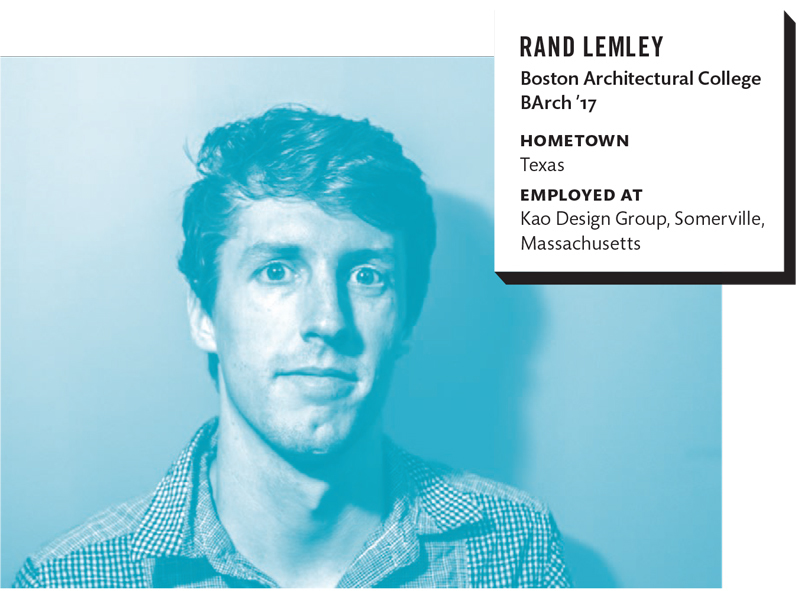
The biggest challenge facing society in 20 years?
Science fiction often deals with extraplanetary habitation, the rise of automated machines, and mass starvation caused by global warming. Each one of these possible futures raises its own set of uncertain ethical dilemmas that are frightening in scope; yet humanity is facing a confluence of all these phenomena within the next 20 years, a confluence that even fiction hasn’t been able to address. How do we provide basic amenities to all in a world fraught with displacement on a scale we have never seen before?
How can architects help?
We are trained to thrive in uncertainty. We ask questions. We probe complexity. We think broad and deep in a single stroke. We organize teams, heed counsel. We care about our clients and users. We will be called on to use this skill set to network across national, racial, and economic boundaries to ensure the environment — built, natural, or otherwise — is fit and welcoming for all.
How can architectural education be improved?
Through a stronger grounding in the liberal arts. Though it can be easy to rattle off the “what” and “how” of a project, the “why” can be more difficult to define. A background in liberal arts provokes the questions students need to answer for themselves before they attempt to answer the “why” in their work.
What do you see yourself doing in 2037?
As a child, I dreamed of space travel and living on another planet. Recent developments have reawakened that desire, and I can dream again of working into retirement off-planet, cultivating new communities on new worlds.
If this were a yearbook, you’d be voted most likely to:
Start a commune.
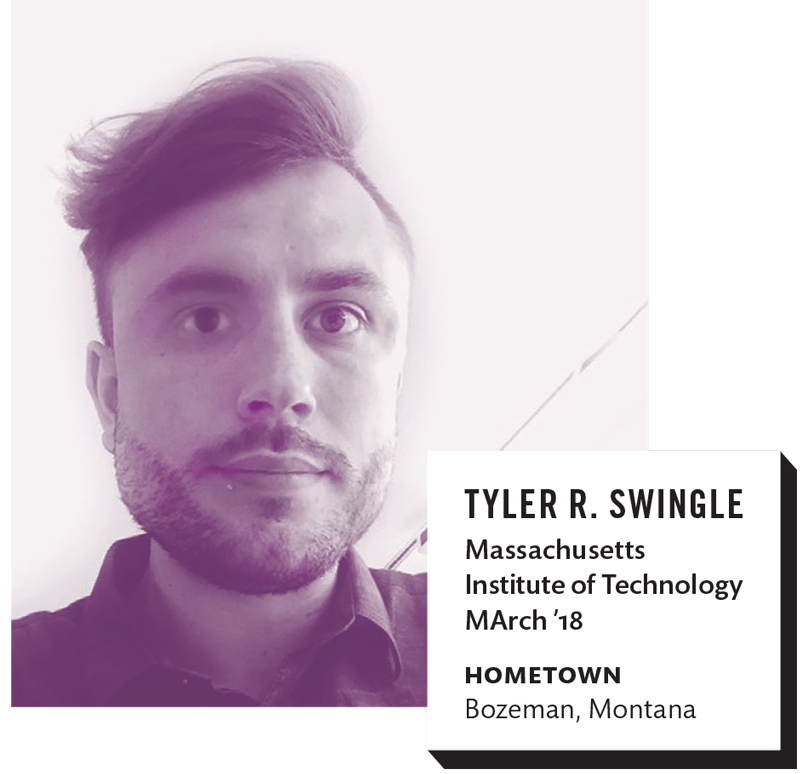
The biggest challenge facing society in 20 years?
Reconciliation. The ability for humans to acknowledge other perspectives beyond their society, culture, and race, as well as beyond their species, is missing in the way we think and process information.
How can architects help?
There is potential for built environments or architecture to operate differently and reflect an openness, but I think designers have more agency in building a world geared toward reconciliation. Designers make decisions every day as to which society they are contributing to and eventually building. Small decisions, mostly not related to architecture or design in general, more frequently shape the world we live in.
How can architectural education be improved?
By increasing a school’s ability to support a wider range of questions/interests while at the same time testing the application and influence of architecture inside these scenarios. Improvement always stems from questioning normal practices and existing techniques.
What do you see yourself doing in 2037?
I imagine my partner and I own some property, but I am not sure if we live there. Work will probably be focused on the upland territories of major coastal cities and transitioning populations away from water-prone areas. That being said, I would love to be working on some sort of landscape remediation project.
In a yearbook, you’d be voted most likely to:
Cheer you up or lower your stress level.
